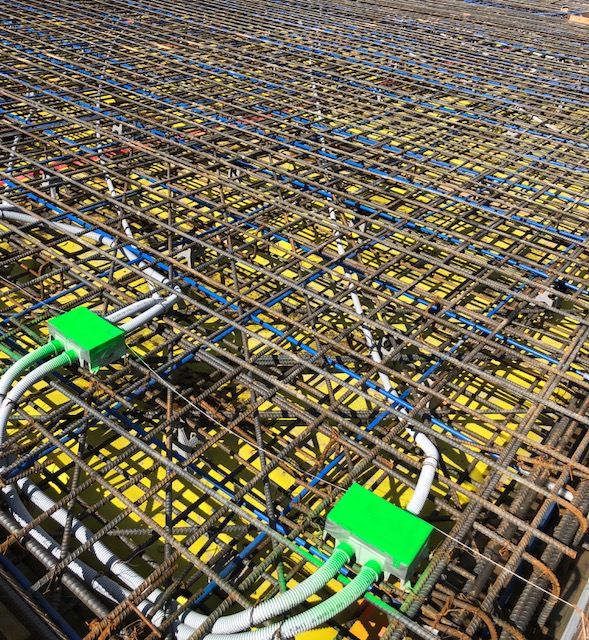Complete Guide to RainierGPR Concrete Scanning Techniques
Complete Guide to RainierGPR Concrete Scanning Techniques
Blog Article
Exploring the Midst: A Comprehensive Overview to Concrete Scanning and Its Diverse Applications
In the world of construction and infrastructure growth, the precise procedure of concrete scanning holds an essential role in making certain the structural integrity and security of projects. As innovation remains to progress, the applications of concrete scanning have broadened far beyond plain surface-level analyses. From discovering rebar and post-tension cable televisions to drawing up conduits and spaces concealed within concrete structures, the abilities of modern-day scanning techniques are both vital and impressive. The true depth of concrete scanning's prospective reaches also better, branching into unforeseen fields and sparking ingenious options. The interconnected internet of opportunities that concrete scanning provides is not only interesting yet also critical for the innovation of different sectors.
Relevance of Concrete Scanning
Recognizing the relevance of concrete scanning is important in ensuring the safety and security and stability of structures throughout building and renovation jobs. Concrete scanning utilizes innovative innovations such as ground-penetrating radar (GPR) and electro-magnetic induction to discover ingrained items, gaps, or other abnormalities within concrete structures.
In addition, concrete scanning plays a critical duty in guaranteeing conformity with building regulations and guidelines that mandate the protection of existing structural parts throughout building and construction activities. By accurately mapping out the inner composition of concrete, scanning modern technologies make it possible for building specialists to make informed choices that promote the structural stability and resilience of structures and framework projects. In significance, the relevance of concrete scanning depends on its capability to guard both the architectural integrity and the workers associated with construction endeavors.
Technologies Utilized in Concrete Scanning
Concrete scanning relies on advanced technologies such as ground-penetrating radar (GPR) and electromagnetic induction to accurately detect embedded things and abnormalities within concrete frameworks. Ground-penetrating radar operates by giving off high-frequency electromagnetic waves into the concrete.
Electromagnetic induction, on the various other hand, functions by producing magnetic fields around a concrete structure with a transmitter coil. When metal things exist within the concrete, they interrupt these electromagnetic fields, triggering eddy currents to flow with the metal. By measuring the adjustments in the magnetic fields with a receiver coil, the system can pinpoint the area of metal objects in the concrete.
These advanced technologies play an essential duty in non-destructive screening, guaranteeing the safety and security and honesty of concrete structures in numerous markets.
Applications in Construction Sector
Within the construction market, concrete scanning innovation finds varied applications that boost project effectiveness and safety and security. Additionally, concrete scanning is used for finding spaces, such as air pockets or locations of damage within concrete, which can jeopardize the total toughness of a structure. Concrete scanning plays a critical role in high quality control by confirming the density of concrete covers over support, ensuring conformity with layout requirements and criteria.

Safety And Security Benefits of Concrete Scanning
In the world of construction security, the implementation of concrete scanning innovation offers a critical benefit in preemptively identifying prospective hazards and fortifying architectural stability. By utilizing advanced scanning techniques such as ground-penetrating radar (GPR) and electro-magnetic induction, building groups can properly locate rebar, post-tension cable televisions, channels, and various other surprise objects within concrete structures. This positive technique significantly decreases the danger of unexpected strikes throughout exploration, reducing, or coring tasks, thus stopping expensive problems, injuries, and project delays.
Additionally, concrete scanning improves worker safety and security by giving real-time information concerning the structural condition of concrete components. By dealing with potential security concerns without delay, concrete scanning contributes here to developing a safe working atmosphere and reducing the likelihood of architectural failures or crashes on building and construction sites.
Future Trends in Concrete Scanning
Arising innovations in scanning technology are poised to transform the field of concrete assessment and evaluation. By using the power of AI, these systems can assess vast amounts of data collected during scanning processes to supply more precise and in-depth understandings right into the problem of concrete frameworks.
Another substantial fad is the development of more portable and straightforward scanning gadgets. Miniaturization of scanning devices allows for much easier access to constrained rooms and remote locations, making read the full info here evaluations much more extensive and efficient. Additionally, developments in wireless interaction modern technologies make it possible for real-time information transfer and analysis, facilitating quicker decision-making procedures.
In addition, there is an expanding concentrate on sustainability in concrete scanning technologies - RainierGPR Concrete Scanning. Manufacturers are significantly integrating green products and energy-efficient functions into their tools to minimize environmental impact. These future fads are established to improve the performance, precision, and sustainability of concrete scanning techniques, forming the market's future landscape
Conclusion
In verdict, concrete scanning plays an essential duty in the construction market by making certain the safety and effectiveness of different tasks. As technology advancements, the future of concrete scanning holds encouraging growths for improving building procedures.

Report this page